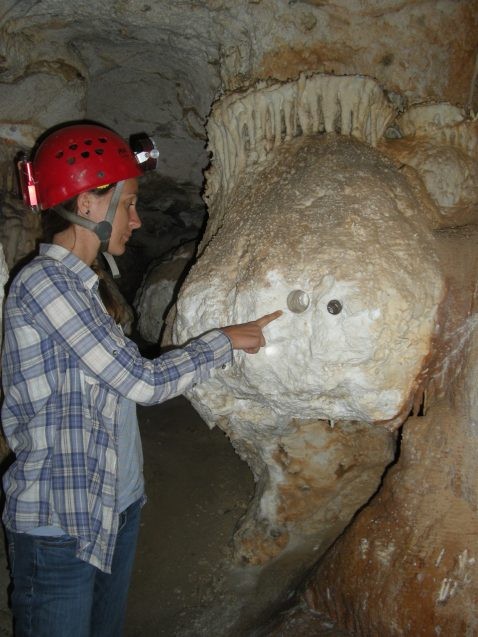Reconstructing 6.5 Million Years of Western Mediterranean Sea Levels
Researchers have reconstructed past sea levels in the western Mediterranean in new detail by sampling coastal cave formations.
With a critical need to predict how quickly sea levels will rise in the coming centuries, scientists are drawing on evidence from past periods when the earth’s climate was as warm, or warmer, than today.
In a new study, an international team of scientists has used cave deposits from the Mediterranean island of Mallorca, off Spain, to reconstruct past sea levels. The vertical extent of these deposits, known as phreatic overgrowths, corresponds with the fluctuating water table, providing scientists with a way to measure past sea levels. The findings were published today in the journal Scientific Reports.

The team aimed to document the position and timing of sea levels during key time intervals over the past 6.5 million years for which global mean sea-level estimates have been highly uncertain. The project expanded on research published last year in the journal Nature, by investigating samples that are either older or younger than the relatively warm Pliocene epoch (5.3 million to 2.58 million years ago). As part of the project, they applied numerical and statistical models to adjust for changes in the level of the land itself, including shifts caused by the waxing and waning of glaciers, and long‐term uplift in the region. They then translated local sea-level estimates into global mean sea level.
Their results show that during key time events, such as Pliocene–Pleistocene Transition (some 2.58 million years ago), global mean sea level stood at 6.4 meters above the present, whereas during the beginning and the end of the Mid‐Pleistocene Transition (a time of repeated glaciations 1.25 million to 0.7 million years ago), sea levels were 1.1 and 5 meters lower than at present, respectively.
“Overall, our results support that sea level dropped significantly after the Pliocene,” said the study’s lead author, Oana A. Dumitru, a University of South Florida PhD. alumna who is now a postdoctoral researcher at Lamont-Doherty.

The authors also showed that local sea level before and at the onset of the Messinian Salinity Crisis (a time 5.96 million to 5.33 million years ago, during which the Mediterranean largely dried up), was approximately 33 meters above present level. These estimates may offer starting points for assessing whether sea-level drops in the western Mediterranean happened gradually or rapidly, the researchers said.
“These results therefore contribute to efforts of studying past warm periods to gain insight into the magnitude and frequency of sea level rise,” the researchers wrote.
Dumitru was joined in the research by Lamont-Doherty geodynamicist Jacqueline Austermann; Victor J. Polyak and Yemane Asmerom of the University of New Mexico; Joan J. Fornós, Joaquin Ginés and Angel Ginés of Universitat de les Illes Balears in Mallorca, Spain; and Bogdan P. Onac of the University of South Florida. The research was funded by the U.S. National Science Foundation and the Spanish State Research Agency.
Adapted from a press release by the University of South Florida.
